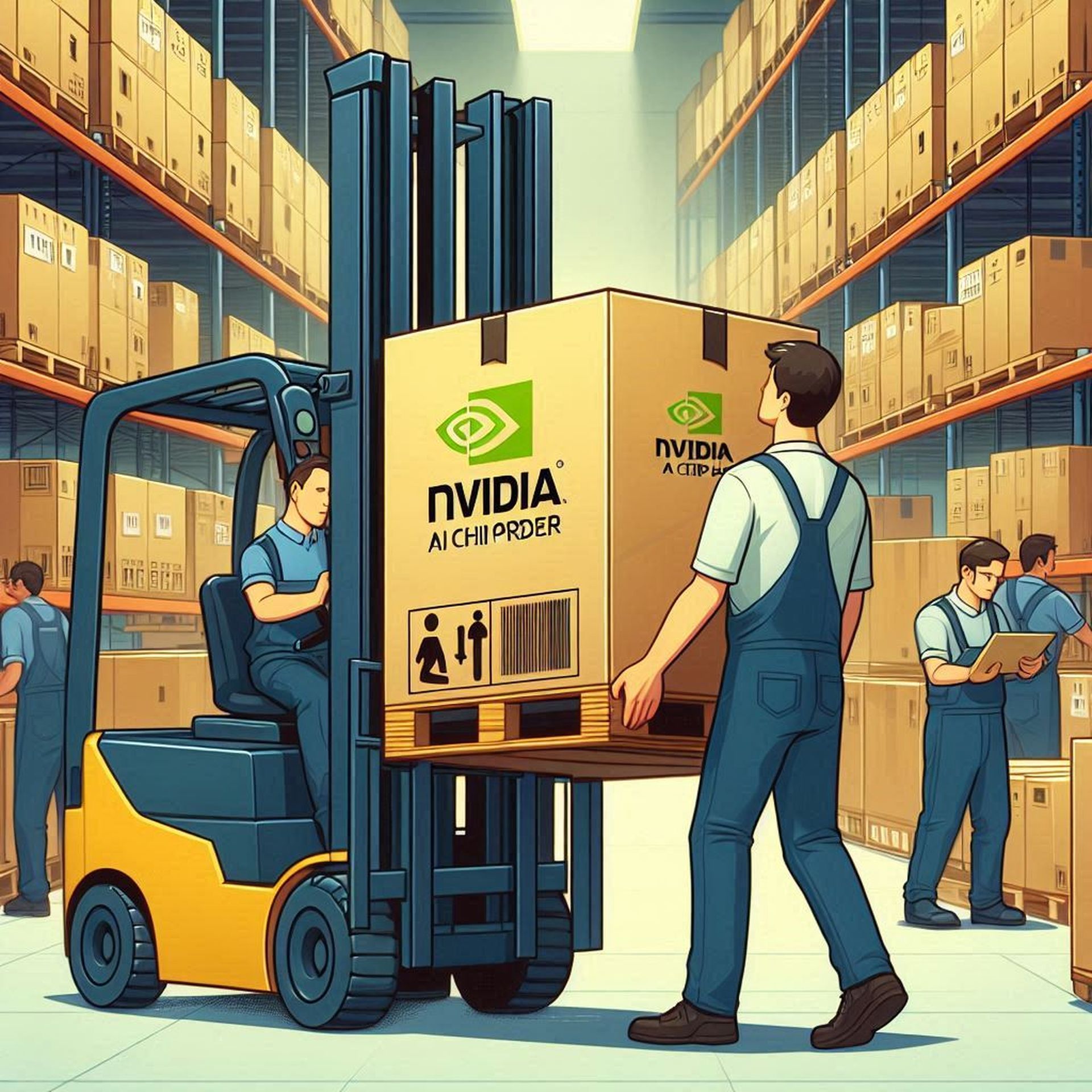Have you ever considered buying AI stocks? You are not alone, they can make you a millionaire! Don’t believe it? Here are the stats you need to now:
In 2023, the number of millionaires in the U.S. shot up by 600,000, bringing the total to 7.5 million! So, what caused this millionaire boom? Well, a big part of it was the success of artificial intelligence. Stocks like Nvidia, Meta, and Tesla soared, making investors super happy. And guess what? This excitement has carried over into 2024, with stock prices still climbing. It’s not just in the U.S., though – AI is becoming a big deal worldwide, with investments expected to keep growing. Want to be part of it?

Disclaimer: Nothing on this site should be construed as investing, financial, trading, or any other kind of advice. No cryptocurrency or stock is recommended for purchase, sale, or storage by Dataconomy. Before making any investing decisions, you should do your own research and consult with a financial professional.
5 golden questions you need to ask before buying AI stocks
You need to find answers to these questions before buying AI stocks:
What’s the competitive advantage?
Understanding what sets an AI company apart is crucial because it determines its ability to maintain profitability and growth in a competitive market. For instance, a company with proprietary algorithms or cutting-edge technology may have a stronger competitive edge, making it more resilient to market fluctuations and better positioned for long-term success. By identifying the company’s unique strengths, investors can assess its sustainability and potential for future innovation.
For example, Nvidia’s dominance in graphics processing units (GPUs) and its focus on AI and data center solutions give it a significant edge. Proprietary technologies like Blackwell further solidify its market leadership.

What’s the market potential?
Evaluating the market potential of AI products and services is essential for gauging the company’s growth prospects. The AI market is vast and spans various sectors, including healthcare, finance, retail, and technology. Assessing the demand for AI solutions in these industries and understanding how the company’s offerings align with market needs can provide valuable insights into its revenue potential. Additionally, considering factors such as technological advancements, regulatory environment, and global adoption trends can help investors forecast the company’s future growth trajectory.
Let’s choose the AI boom’s leading singer as an example again! With growing demand across industries like healthcare, finance, and gaming, Nvidia’s AI and data center solutions have immense market potential. The increasing adoption of AI-driven technologies further expands its addressable market and eventually its stock.
5 best AI ETFs that people can’t take their eyes off
What are its EPS and P/E?
Financial metrics like earnings per share (EPS) and price-to-earnings (P/E) ratio are fundamental indicators of a company’s financial health and valuation. EPS measures the profitability of each outstanding share of stock, indicating the company’s ability to generate earnings for its shareholders. A high EPS suggests strong profitability, while a low EPS may raise concerns about the company’s performance. Similarly, the P/E ratio compares the company’s current stock price to its earnings per share, providing insight into its valuation relative to its earnings. By analyzing these metrics, investors can assess the company’s earnings potential and determine whether its stock is overvalued or undervalued compared to its peers and the broader market.

Let’s look at Alphabet Inc., the parent company of Google, which has a strong presence in AI through its subsidiaries, including DeepMind and Waymo. As of a certain date, Alphabet reported a robust EPS of $58.61, indicating its ability to generate significant earnings per share for its shareholders. Additionally, Alphabet’s P/E ratio of 29.43 suggests that investors are willing to pay a premium for its stock relative to its earnings, reflecting confidence in the company’s growth prospects and financial performance.
Who are its competitors?
Identifying and understanding the company’s competitors is essential for assessing its competitive positioning and market share. Analyzing competitors’ strengths, weaknesses, and market strategies can help investors gauge the company’s relative strengths and weaknesses. Additionally, monitoring industry trends and technological developments can provide valuable insights into the competitive landscape and the company’s ability to innovate and differentiate itself from rivals.
Best AI chip companies: Do not sleep on these Nvidia competitors
Consider the competitive landscape in the AI-driven cloud computing market, where companies like Amazon Web Services (AWS), Microsoft Azure, and Google Cloud Platform (GCP) compete for market share. Each of these companies offers AI-powered services, including machine learning, natural language processing, and computer vision, to cater to the growing demand for cloud-based AI solutions. Understanding the strengths and weaknesses of these competitors can help investors assess the relative positioning of each company within the market and anticipate future market dynamics.
Does it give back to investors?
Examining how the company prioritizes giving back to investors is critical for assessing its shareholder value proposition. Companies that prioritize returning capital to shareholders through dividends, share buybacks, or reinvestment in growth initiatives demonstrate a commitment to creating long-term value for investors. Evaluating factors such as dividend yield, dividend growth rate, and shareholder-friendly policies can help investors assess the company’s track record of delivering returns and its potential for future shareholder value creation.

Take Microsoft Corporation as an example of a company that prioritizes giving back to investors. Microsoft has a history of returning capital to shareholders through dividends and share buybacks while also reinvesting in growth initiatives. Previously, Microsoft had a dividend yield of 0.81% and a dividend growth rate of 10.92%, demonstrating its commitment to delivering returns to shareholders through regular dividend payments and consistent dividend growth. Additionally, Microsoft’s share buyback programs have helped enhance shareholder value by reducing the number of outstanding shares, thereby increasing earnings per share and potentially driving stock price appreciation.
Remember, investing involves risks, and thorough research is essential. So, before making any investment decisions, consult with a financial professional and conduct your own due diligence. By asking the right questions, you can navigate the world of AI stocks and potentially join the ranks of millionaires.
How to buy AI stocks
Buying AI stocks is similar to purchasing shares of any other company, but here are some steps to guide you through the process:
- Research companies: Look into AI firms like Nvidia or Alphabet.
- Open brokerage account: Choose a reputable broker.
- Fund account: Transfer money to your brokerage.
- Place order: Use the brokerage platform to buy stocks.
- Monitor investments: Keep track of stock performance.
- Diversify portfolio: Invest in a mix of AI and other stocks.
- Stay informed: Follow market trends and news.
Following all the AI news hard? If so, just follow us and learn what is happening when it is happening!
All images are generated by Eray Eliaçık/Bing





